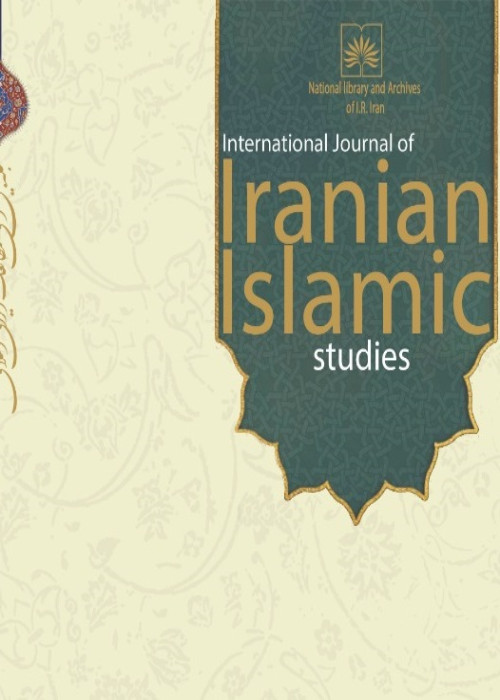Projections of Ancient Trade Routes in the Kūshnāma
As one of the Iranian national and heroic epics after Firdawsī’s Shāhnāma, the Kūshnāma was composed in New Persian by Īrānshān (maybe Īrānshāh) ibn Abī al-Khayr at the beginning of the 12th century. It has more than ten thousand verses, nearly half of which are devoted to the exile of the mythical king Jamshīd’s descendants in the lands of Chīn, Māchīn, and B.sīlā, and to their resistance against the assaults by Kūsh and his son, brother and nephew of Żaḥḥāk, the Tāzī rulers of Chīn and Māchīn.In line with Iranian literary historiography, which typically retells history by combining legends of pre-Islamic provenance with Islamic-era historical knowledge, the Kūshnāma contains a wealth of relatively authentic geographical information about the ancient world and even depicts several long-distance travel routes. Such geographical information could be placed against the historical context in which it was composed and further verified by other Muslim classical historical and geographical works. Through the lens of historical geography, this paper elucidates the Kūshnāma’s depictions of travel routes between Iran and East Asia, most likely drawing upon historical prototypes from the trade routes between the northwestern nomadic zone and China’s central plain, the maritime trade routes between China’s central plain and the Korean peninsula, the fur trade routes between Northeast and Central Asia, and the northern trade routes between Iran and Europe. Moreover, certain plots of the Kūshnāma also imply the influence of ancient horse trade routes. I contend that travel routes in the Kūshnāma, whether presented as routes of migration or military expedition, reveal their fundamental nature as trade routes for their close relation to the large-scale commercial activities conducted by merchants of various ethnic groups over the Eurasian continent in history.A close examination of the Kūshnāma along with relevant sources in Perso-Arabic and Chinese historical and geographical works leads to the following conclusions Kūshnāma’s depictions of the caravan trade between Chīn and Māchīn bear similarities with commercial activities of the Sogdians in history and can be read as a projection of Sogdian caravan commercial expeditions between Central Asia and East Asia in the Iranian epics. The prosperity of the maritime Silk Road provided Arabs and Persians with an important way to understand East Asia. Records related to China and Silla in some of the Muslim historical and geographical works compiled from the 9th century onward were evidently based on information acquired by Muslims along the maritime Silk Road. Therefore, it is reasonable that plots involving the maritime trade routes between China’s central plain and the Korean peninsula should appear in Persian epics. Considering scholarly consensus on Sogdian participation in the intra-Asian fur trade, I propose that B.sīlā’s delivery of sable to Iran and Chīn via diplomatic corps described in the Kūshnāma can be read as a projection of Sogdian international commercial affairs along the ways linking Central Asia and Northeast Asia in the Iranian epics. Analogues of Jamshīd’s clansmen’s journey via the northern sea route cannot be found in historical sources compiled before the composition of Kūshnāma, but a curious coincidence between the narrative of Kūshnāma and a later historical event draws our attention.This paper further demonstrates how ancient trade influenced literary texts by creating and shaping folk beliefs, more specifically how the horse trade in ancient times promoted the spread of folk tales about legendary water horses and how these stories later inflected important historical and literary texts including the Kūshnāma. According to the Kūshnāma, the inhabitants of B.sīlā used to cross-breed their domesticated horses with a magical horse living in the sea in order to obtain fine-bred ones. The marvelous horses of the water horse breed were sent by the kings of B.sīlā to the king of Chīn and Māchīn, as well as to the king of kings of Iran as precious gifts on several occasions. Textual evidence from the Iranian storytelling tradition and early Muslim geographical works suggests that accounts of fabulous horses coming out of water and mating with ordinary horses first originated in Khuttalān of Transoxiana and approximately from the 9th to the 12th century and then spread westwards, even to Urfa of southern Anatolia via Ṭūs in Khorasan, Ray and Hamadan on the Iranian Plateau. Therefore, we can at least hypothesize that in the Islamic era, stories concerning the water horse transmitted in Perso-Arabic literature are most likely the by-products of the westward migration of the people speaking Turkic languages. On the one hand, the flourishing international horse trade in ancient times may have influenced the spread of stories about the legendary water horse over the Asian continent, one of which was grafted onto the story of the Iranian princes exiled in B.sīlā in the Kūshnāma. On the other hand, kings of B.sīlā’s presentation of fabulous horses of the water horse breed to kings of Chīn and Iran in the Kūshnāma can be deemed as a literary projection of the commercial activities conducted by diplomatic missions.In conclusion, prosperity on the Silk Road, motivated by the need for trade between the East and the West, had significant cultural ramifications. The Kūshnāma’s incorporation of trade caravans and trade routes by Jamshīd’s and Żaḥḥāk’s clansmen can be attributed to folkloric expressions about the active long-term trade activities by diverse ethnic groups such as Parthians, Sogdians, Persians and Turkic-speaking peoples along the Silk Road in ancient times. Hence, they are projections of certain fragments of “folk history” in the collective memory of the ancient Iranians.
- حق عضویت دریافتی صرف حمایت از نشریات عضو و نگهداری، تکمیل و توسعه مگیران میشود.
- پرداخت حق اشتراک و دانلود مقالات اجازه بازنشر آن در سایر رسانههای چاپی و دیجیتال را به کاربر نمیدهد.


